Key takeaways
- Science fiction props serve as tangible connections to their narratives, blending artistry and technical skill through meticulous craftsmanship.
- Choosing the right materials, like clay, silicone, and foam resin, is essential for achieving realism and functionality in prop sculpting.
- Using a variety of tools and techniques, including airbrushing and rubber-tipped shapers, is crucial for refining details and enhancing the overall quality of the prop.
- Finishing touches, such as sanding and applying a matte sealer, greatly impact the believability of the prop by ensuring a polished and lifelike appearance.

Introduction to Science Fiction Props
Science fiction props have always fascinated me because they bring otherworldly stories to life in tangible ways. When I first encountered a well-crafted prop, I was struck by how something so seemingly simple could ignite such vivid imagination and emotion. Have you ever held a piece of futuristic gear and felt instantly connected to the story it belongs to?
These creations are more than just objects; they are bridges between fantasy and reality, giving fans a chance to touch the essence of a sci-fi universe. The craftsmanship behind them often reflects not only technical skill but also deep storytelling insight. I find that exploring how these props are made reveals a unique blend of artistry and science that’s genuinely inspiring.
From my experience, working on science fiction props feels like crafting a piece of a dream. The challenge is to balance creativity with practicality, understanding the story while sculpting an object that looks believable. This delicate dance is what makes prop-making endlessly rewarding and thrilling.
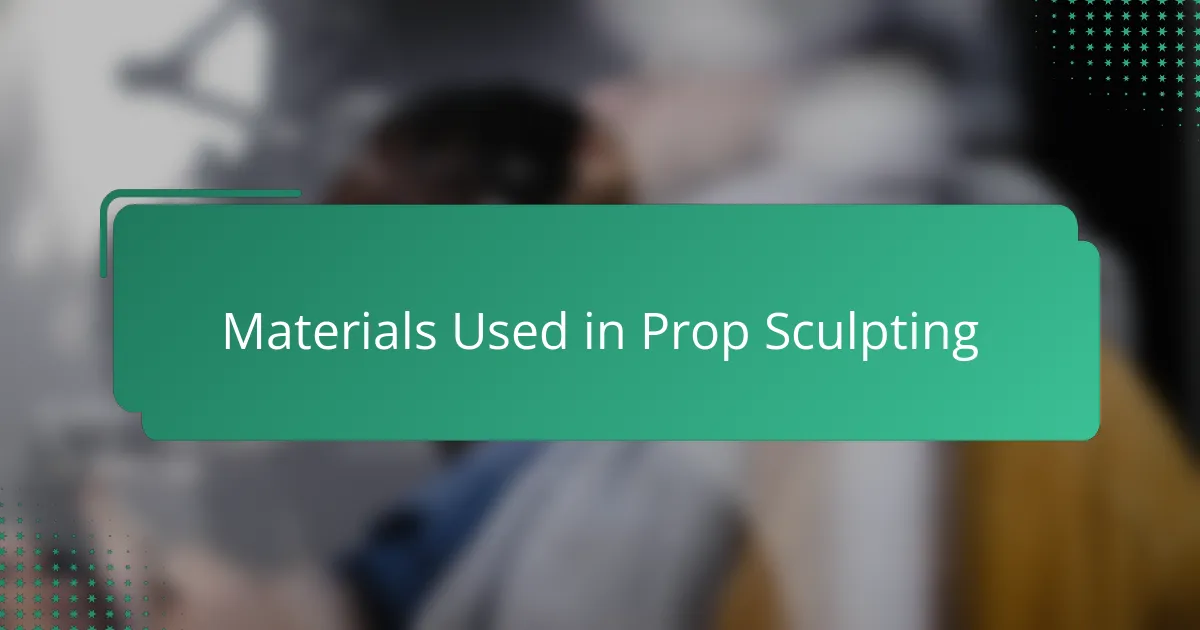
Materials Used in Prop Sculpting
When I began sculpting the Hulk hand, I quickly realized that choosing the right materials was crucial. Clay became my first ally—it’s flexible, easy to shape, and lets me tweak every bulging muscle to match that iconic raw power. Have you ever tried molding something that demands both bulk and detail? Clay gives you that satisfying control.
Once the basic form was nailed down, I moved on to using silicone for molds. Silicone’s flexibility amazed me; it captures every nuance of the sculpt while being strong enough to handle the casting process. It felt like giving life to the Hulk’s hand, preserving the intricate details I had spent hours perfecting.
For the actual hand, I opted for lightweight foam resin. It surprised me how something so light could look so massive and solid on screen. Balancing realism with wearability pushed me to experiment, and that’s where choosing materials becomes an art in itself—how do you make something look heavy and powerful without exhausting the actor? That’s the real magic behind the materials in prop sculpting.
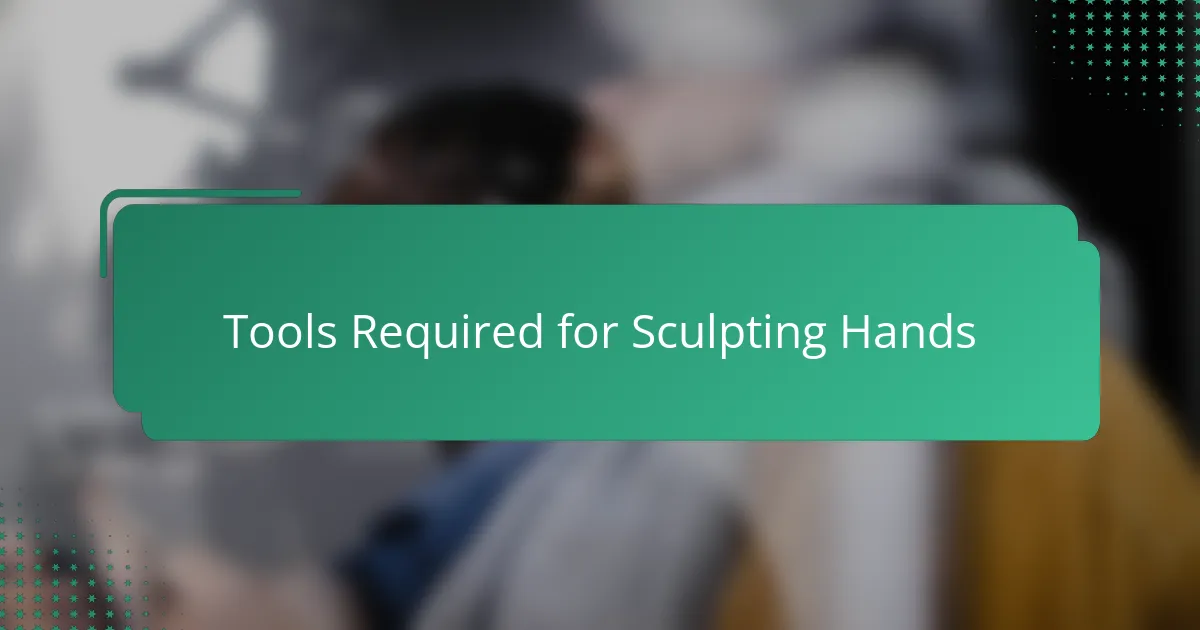
Tools Required for Sculpting Hands
When I started sculpting the Hulk hand, the first tools I reached for were a set of fine sculpting knives and loop tools. These allowed me to carve out the deep creases and exaggerated muscle lines that give the hand its fierce, larger-than-life look. Have you ever noticed how small details can make or break the realism of a prop? Those tools made all the difference for me.
As the sculpture began to take shape, I relied heavily on rubber-tipped shapers to smooth out rough patches without losing the hand’s rugged texture. It’s amazing how something so simple can finesse a piece from clunky to convincing. I found myself constantly switching between tools, almost like the hand demanded a variety of strokes to come alive.
One surprising addition to my toolkit was a small airbrush—while not strictly a sculpting tool, it helped me apply release agents evenly before molding. This blend of sculpting and finishing tools showed me that creating a prop is a layered process, each step needing its own set of precise instruments. Without the right tools, capturing the Hulk’s raw power would have been nearly impossible.
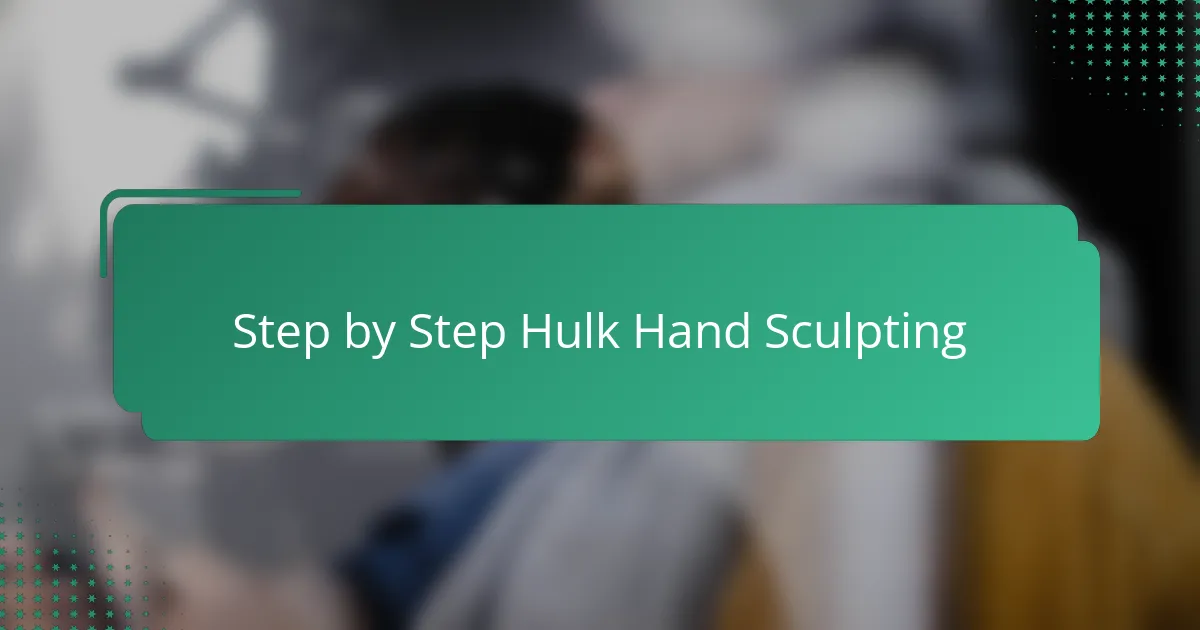
Step by Step Hulk Hand Sculpting
The first step I took when sculpting the Hulk hand was to block out the overall shape using clay. I focused on getting those massive knuckles and thick fingers right because, to me, that’s where the power of the Hulk really shows. Have you ever struggled with making a bulky shape look dynamic instead of just… heavy? It took some trial and error to balance bulk with believable anatomy.
Next came refining the muscle definition. I used loop tools to carve deep grooves and added textures that mimic real skin creases, but exaggerated just enough to match that comic book style. I remember feeling a rush when the hand started looking fierce and alive—almost like it could crush through the table I was working on.
Finally, I carefully smoothed transitions between muscles with rubber-tipped shapers, ensuring the hand didn’t look too rough or unfinished. This step felt like giving the sculpture its final heartbeat. I often paused to ask myself, “Does this feel like the Hulk’s unstoppable grip?” because bringing that raw emotion into the shape was just as important as technical accuracy.
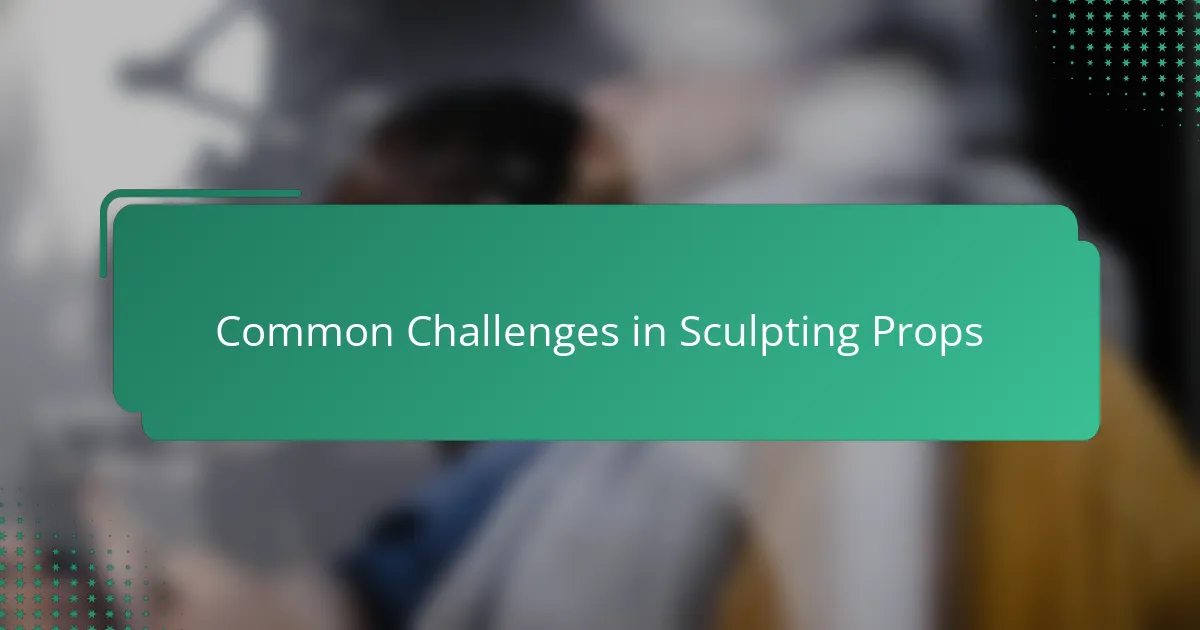
Common Challenges in Sculpting Props
One of the biggest hurdles I faced when sculpting the Hulk hand was managing scale without losing detail. Have you ever tried to capture something massive but ended up with a blocky, lifeless shape? It’s tricky to maintain the hand’s monstrous size while still carving those muscle bulges and veins that bring it to life.
Another challenge that surprised me was dealing with the fragility of certain materials during sculpting. There were moments when a carefully shaped finger tip would snap or a delicate crease would smear, and I had to slow down and rethink my approach. That patience—and learning to adapt—felt just as important as any technical skill.
Lastly, achieving the right balance between realism and exaggeration is always a tightrope walk. I kept asking myself, “Is this too subtle? Or is it over the top?” For a character like the Hulk, the hand can’t just look big; it has to scream power and emotion. Finding that sweet spot kept me coming back to tweak and refine until the hand truly felt alive.
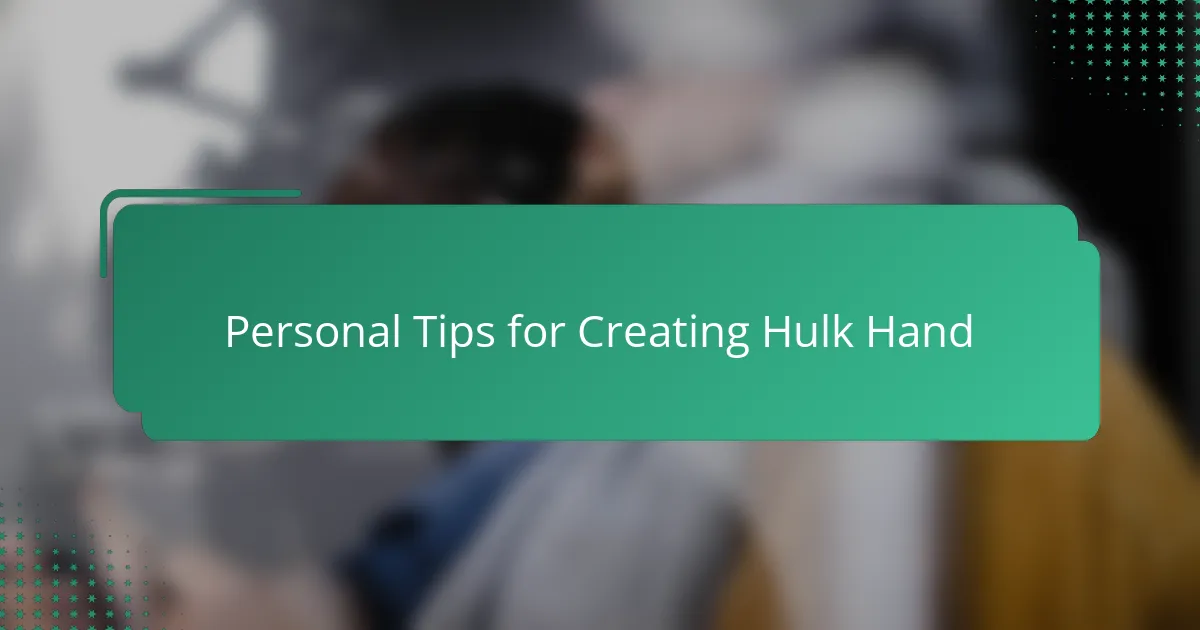
Personal Tips for Creating Hulk Hand
When I first started sculpting the Hulk hand, I quickly learned the value of patience. Have you ever felt frustrated when a perfect muscle detail just wouldn’t take shape? I found that stepping back and letting the clay rest before revisiting those tricky spots made a huge difference in achieving clean, powerful lines.
Another tip I swear by is using reference images constantly. I kept a folder of comic panels and movie stills open while working, which helped me capture not just the anatomy but the spirit of the Hulk’s grip. Without those visual cues, the hand might’ve ended up too generic—something I definitely wanted to avoid.
Finally, don’t underestimate the power of texture layering. I often layered small skin details over broader muscle forms, then softened transitions with rubber-tipped tools. It’s this mix of rough and smooth that, in my experience, brings the hand alive and stops it from looking like just a big green glove. Have you noticed how texture can really sell realism? It’s one of those subtle things that makes all the difference.
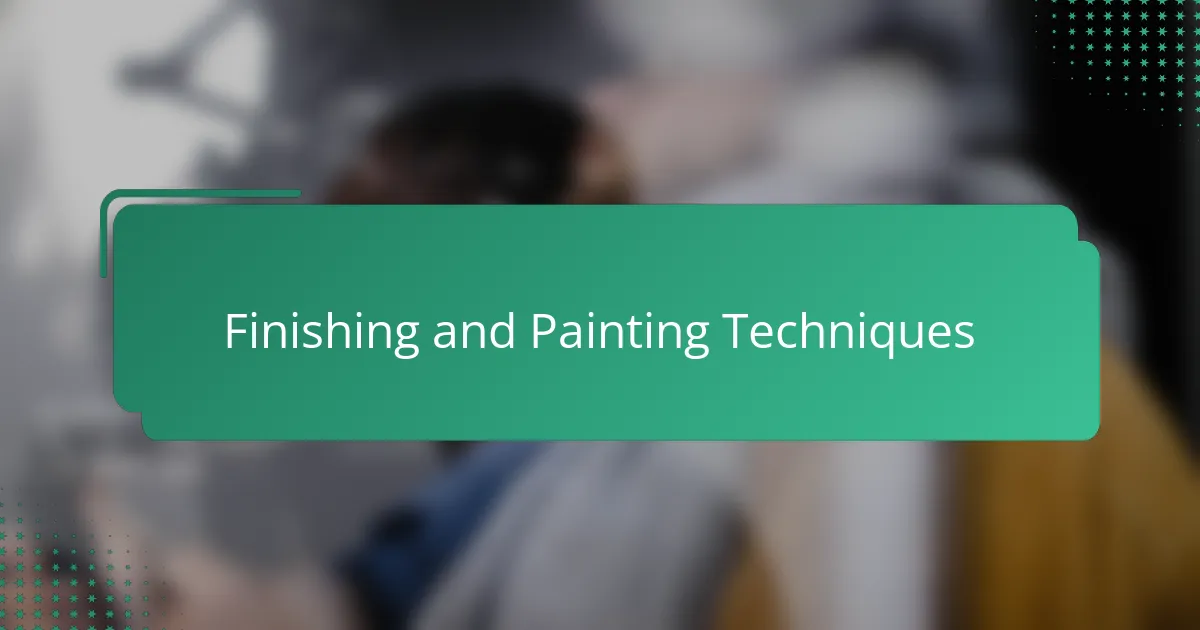
Finishing and Painting Techniques
Finishing the Hulk hand sculpt felt like the moment when all the hard work finally came together. I remember carefully sanding the foam resin to smooth out any rough spots—this step was crucial because even tiny imperfections stood out once the paint went on. Have you ever noticed how a perfectly smooth surface can make painting feel so much more rewarding? That polish really set the stage for what came next.
When it came to painting, layering was my best friend. I started with a base coat of deep green, then gradually built up highlights and shadows with airbrushing. I found that this technique gave the hand a lifelike depth and vibrancy that flat paint just can’t achieve. To me, those subtle color transitions captured the Hulk’s raw power better than anything else.
Sealing the paint was the final act—applying a matte clear coat helped preserve the intricate details without adding unwanted shine. I learned the hard way that gloss can make a prop look toy-like, which definitely wasn’t the vibe I wanted. Do you find that finishing touches like this can make or break the believability of a sci-fi prop? For me, it’s that last step that truly brings the creation to life.


